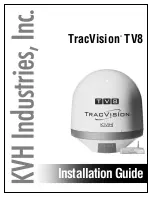
- 3 -
Overhead Power Line Safety
Before you begin working, check carefully for overhead power lines in the area you will be
working. Don't assume that wires are telephone or cable lines: check with your electric utility for
advice. Although overhead power lines may appear to be insulated, often these coverings are
intended only to protect metal wires from weather conditions and may not protect you from electric
shock
Keep your distance! Remember the 10-foot rule: When carrying and using ladders and other long
tools, keep them at least 10 feet away from all overhead lines - including any lines from the power
pole to your home.
Installation
Mounting Pipe
Use a customer supplied thick-walled galvanized steel mounting pipe
at least
4
feet long. This will allow approximately 2 feet or more to be below ground and
approximately 2 feet above ground. A thick-walled steel pipe 1-3/4" OD to 2"
OD maximum is recommended with a minimum thickness of 1/8" (1/4"
preferred) should be used. For permanent mounting, use a post-hole digger to
make the hole deep enough to accommodate 2 feet of pipe and a couple inches
of gravel at the bottom for drainage. Set the pipe on the gravel, use the pre-mix
concrete to fill around the pipe, adding water and mixing as you fill or mix the
concrete first, then pour in the hole. Fill the hole until the concrete is level with
the ground around it. Use a level as you fill the hole to be sure the pipe is
straight. Allow to set overnight. Your location, landscape and ground conditions
may require different mounting solutions in order to have the steel mounting
pipe and the vertical antenna in a secure position.
Note: Galvanized steel, rather than aluminum, is much more suitable for mounting in concrete.
Aluminum will quickly corrode due to incompatibility with the materials used to make
concrete.
Radial System
The use of a radial system is a key requirement for a high performance quarter wave vertical
antenna system. With a vertical antenna system, the radials are the second half of the antenna. The
radials contribute to the radiation efficiency of the entire vertical antenna system.
For a ground mounted quarter-wave vertical, a minimum of 20 radials, each 20 feet long, should be
used. Using 32 radials at 20 feet long is preferred and highly recommended. The
extra radials will help overcome unknown poor-soil conditions, improve
efficiency, and ensure the best performance possible from the vertical antenna.
Improved performance will be achieved if you install 60 radials. DX Engineering
DXE-RADW
Radial Wire, a stranded 14 gauge relaxed PVC insulated copper
wire is suggested for the best results. A ground mounted HF antenna should be
installed at least 20 feet from any obstructions, so all radials should fit in the
available space.

























